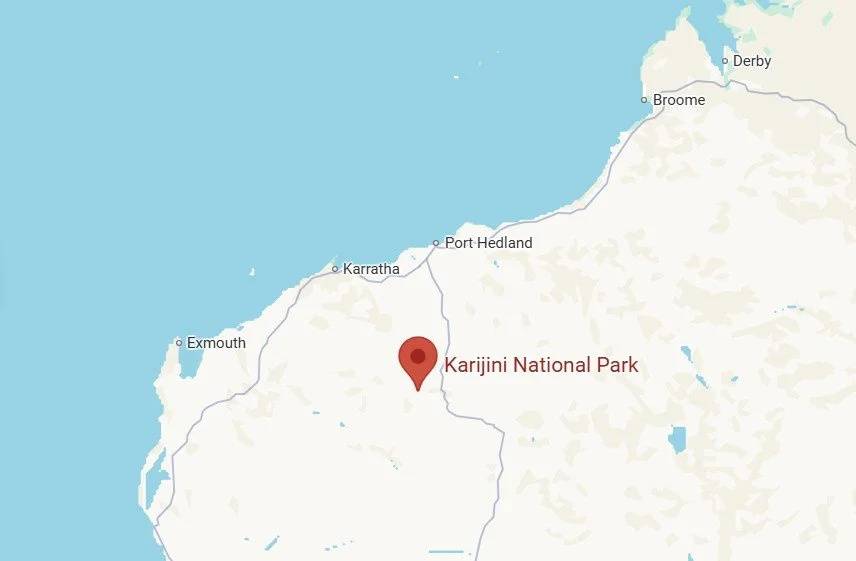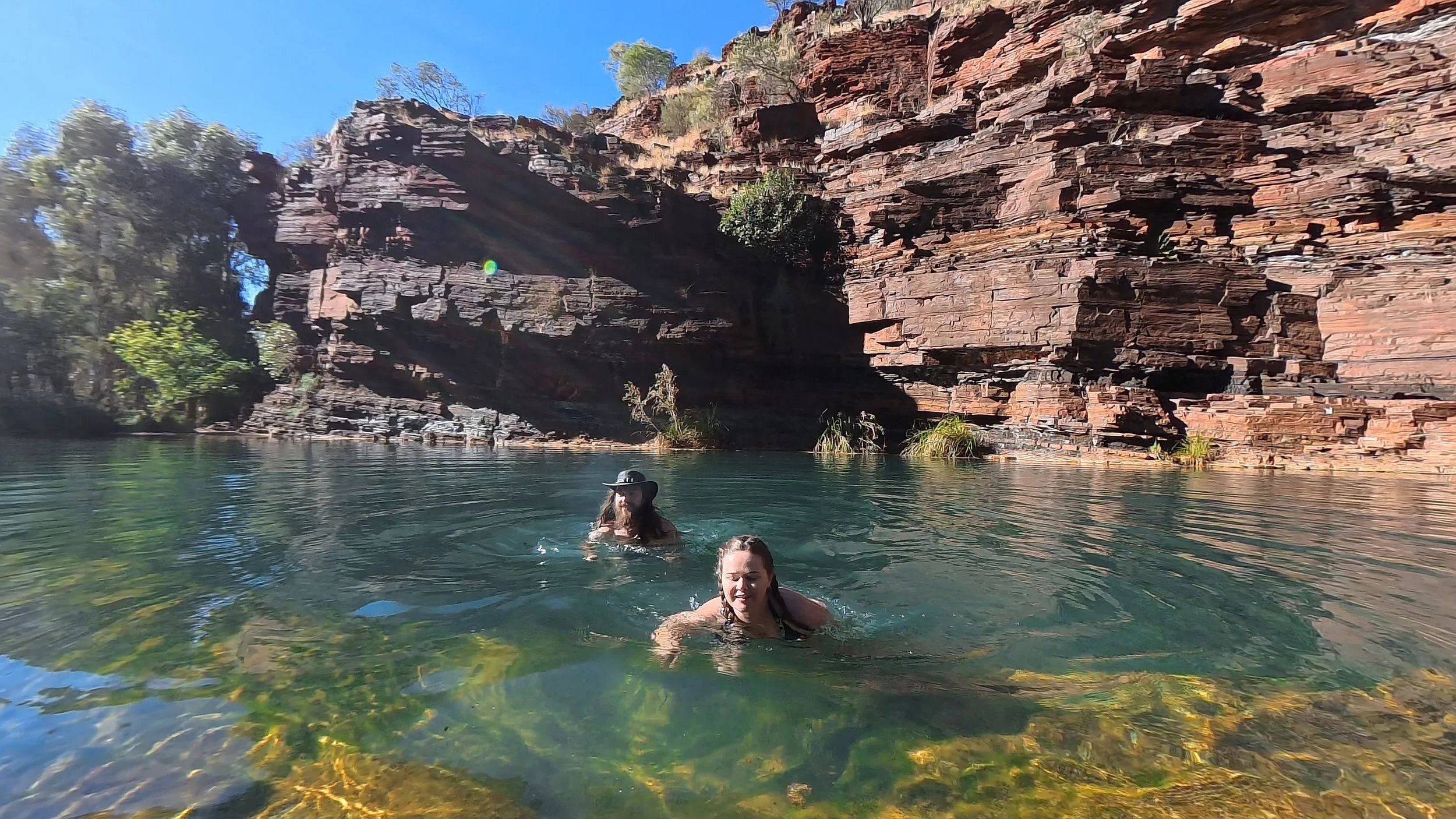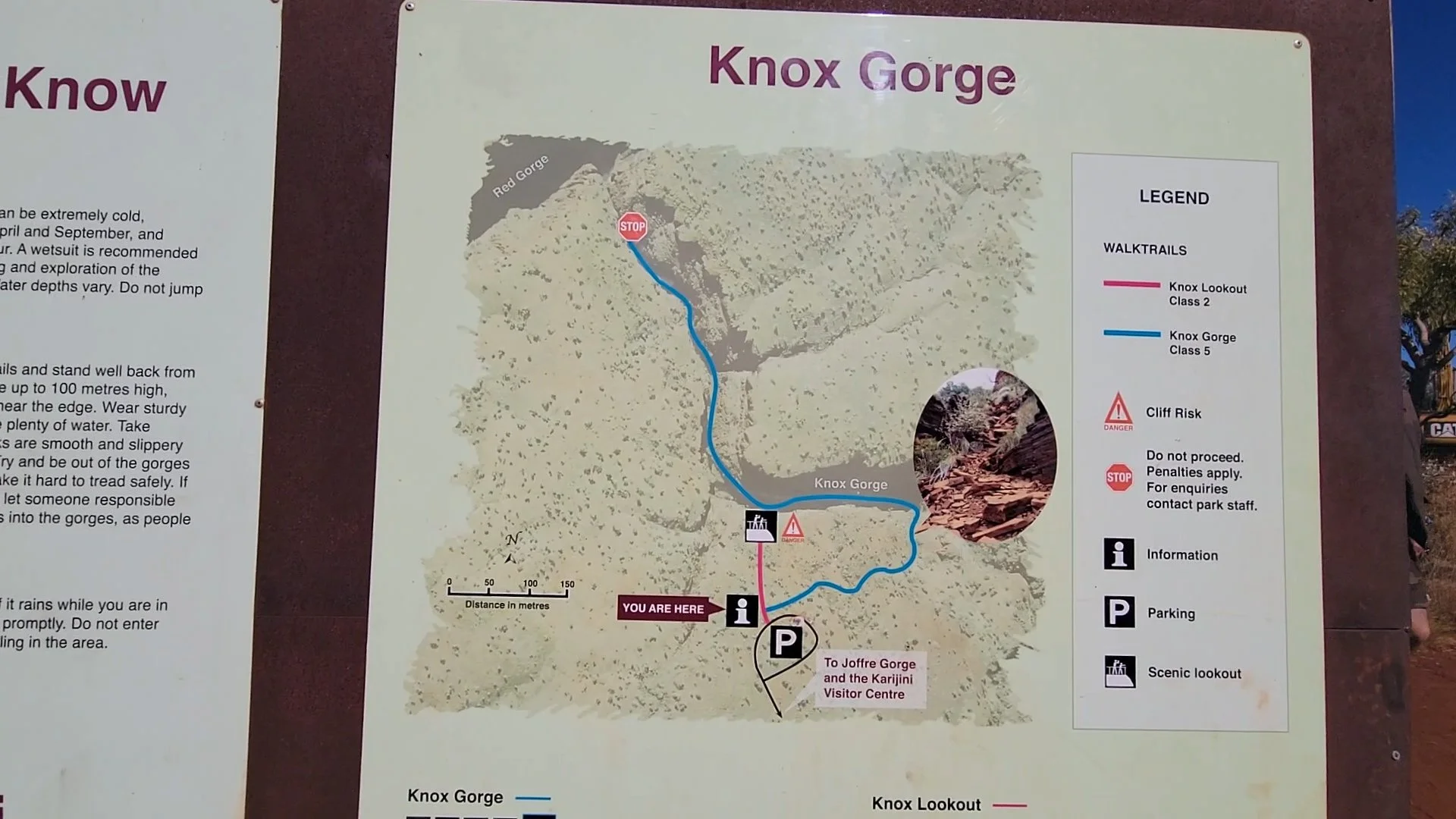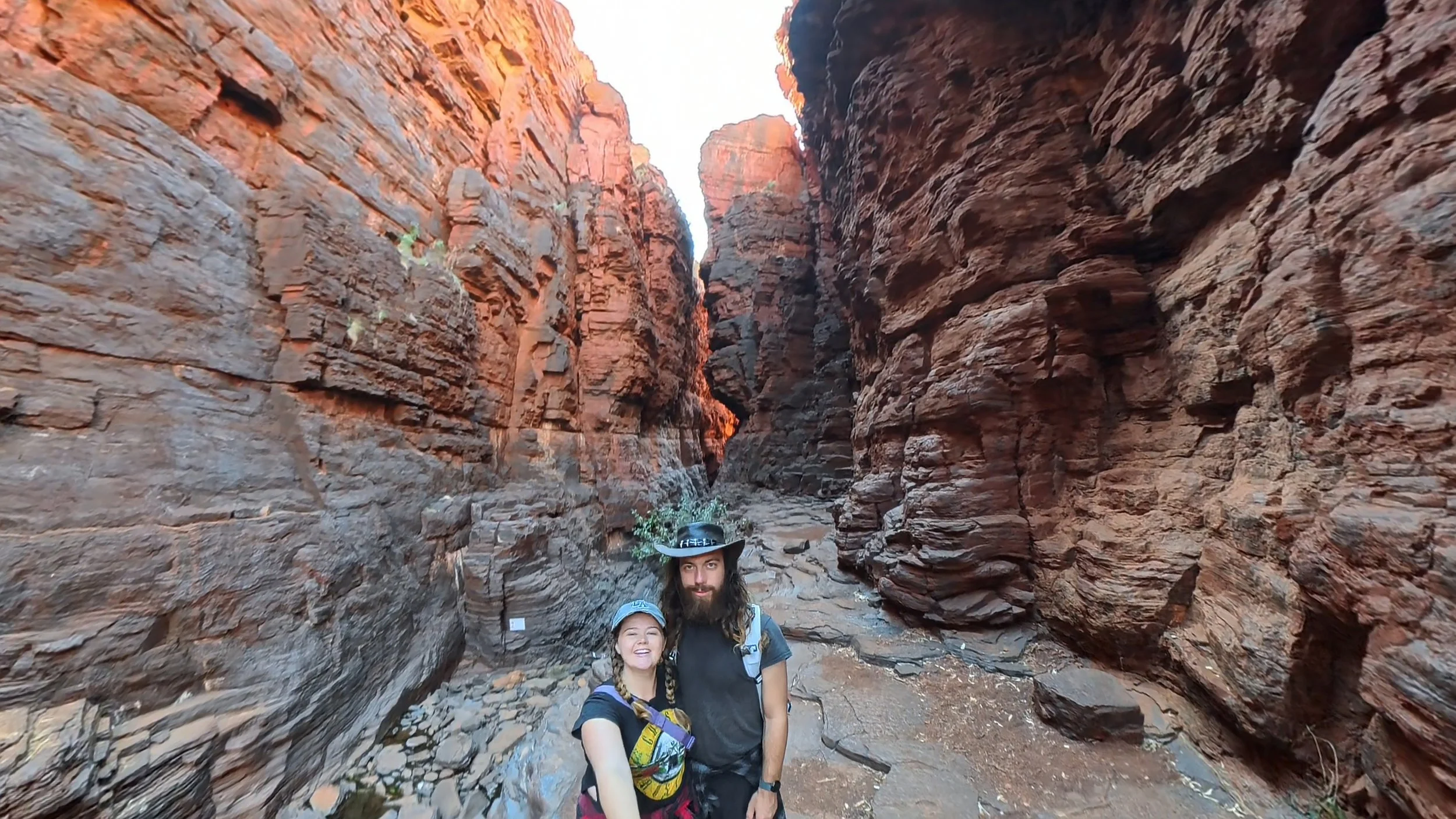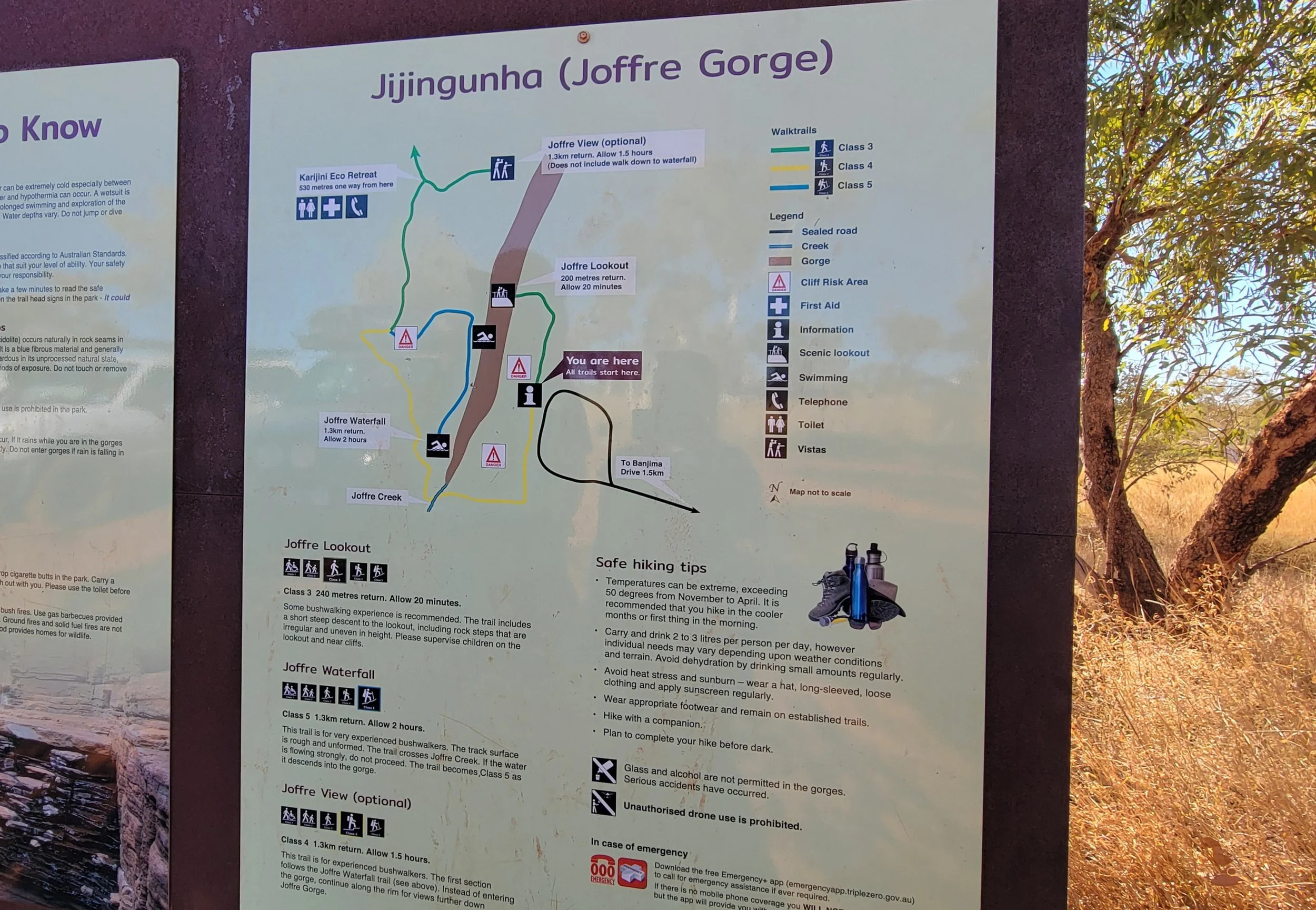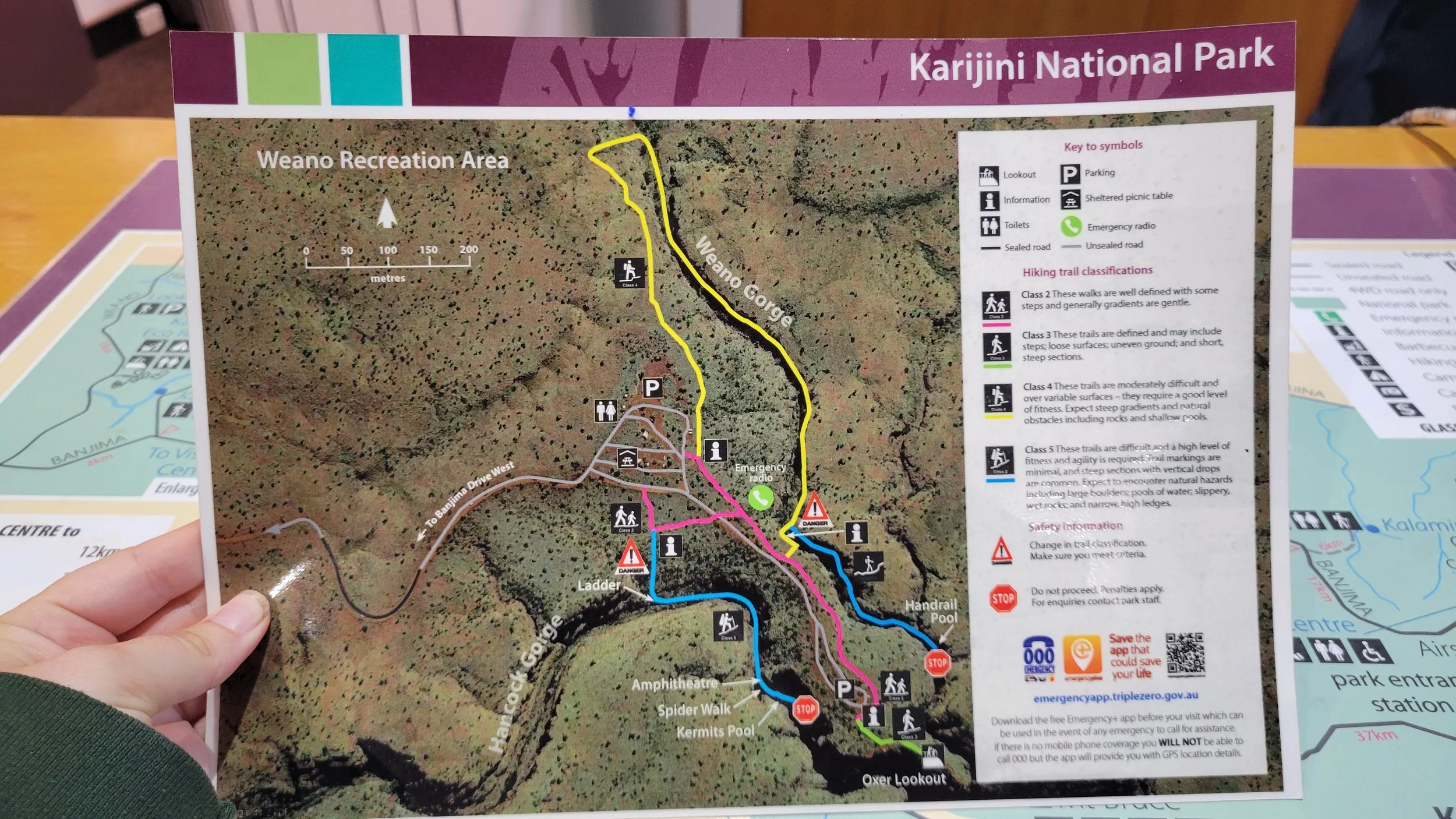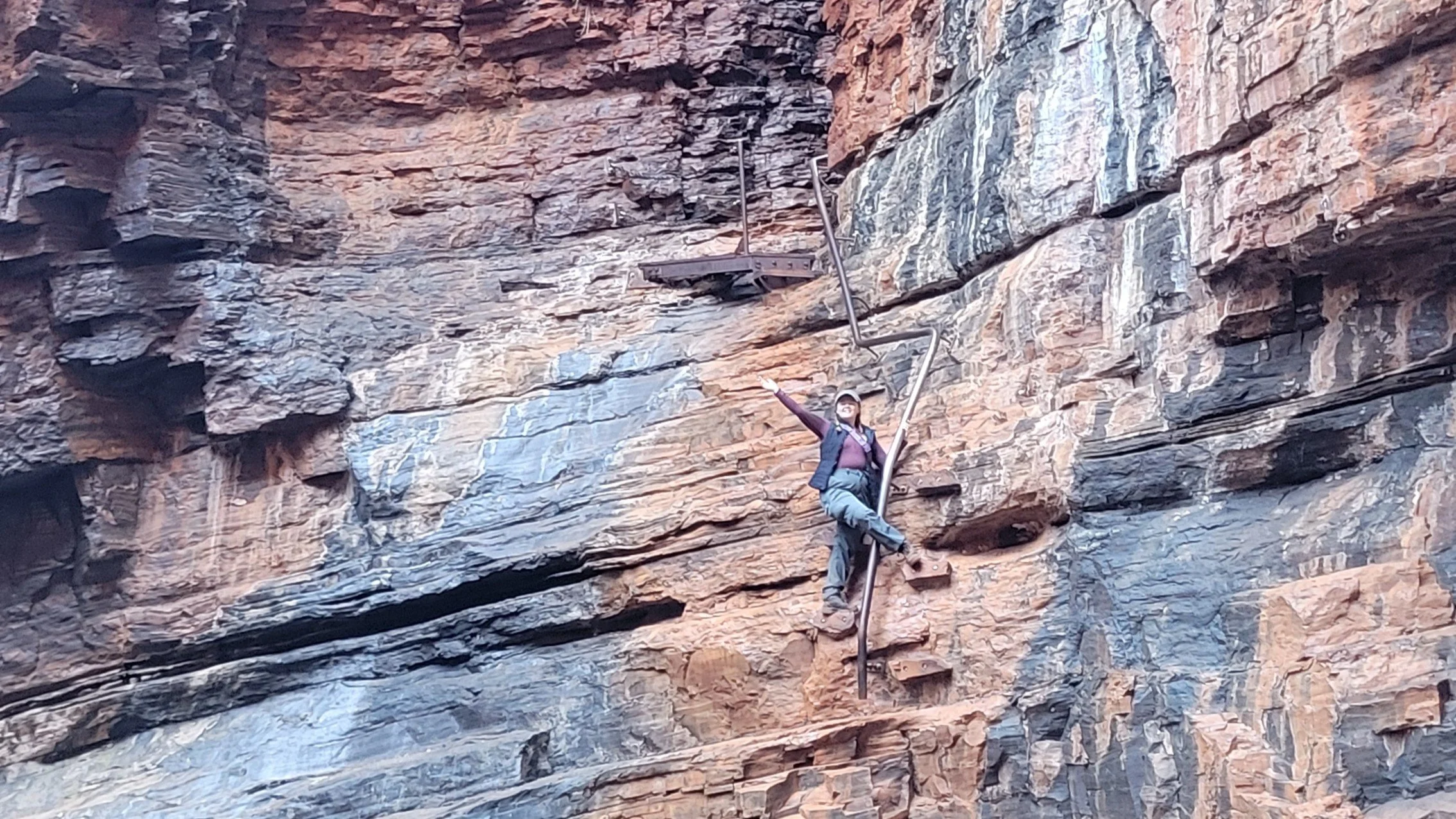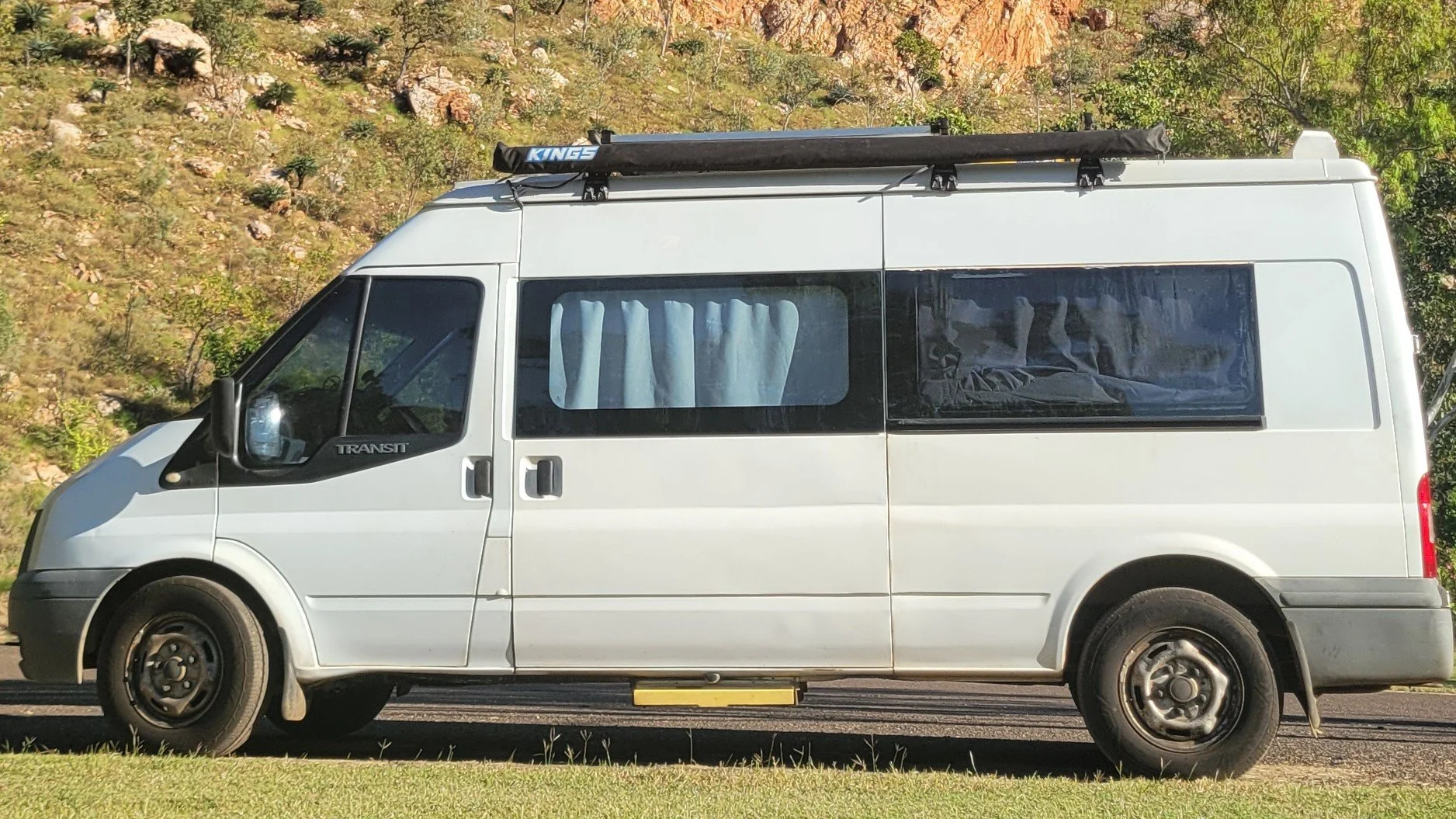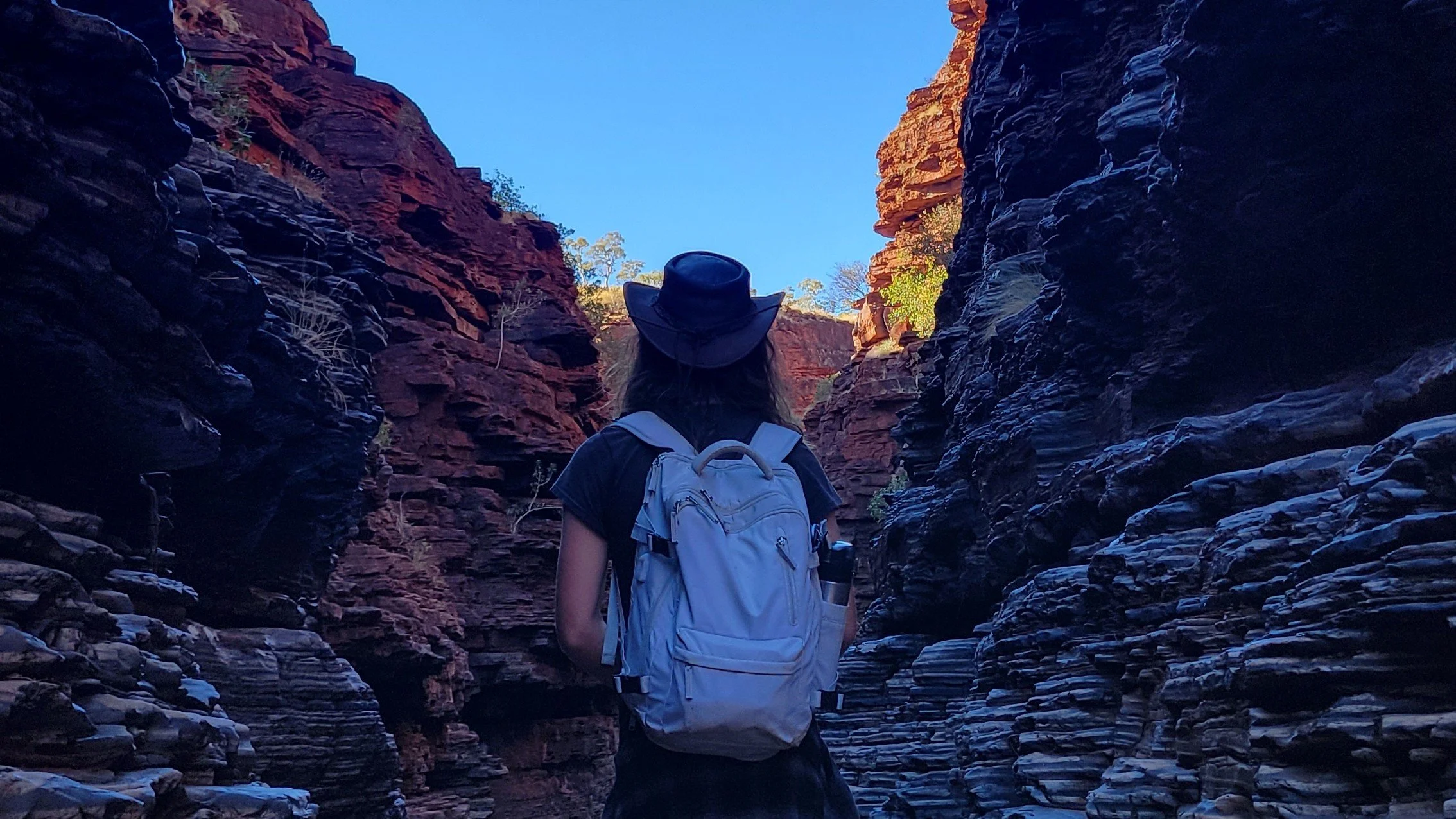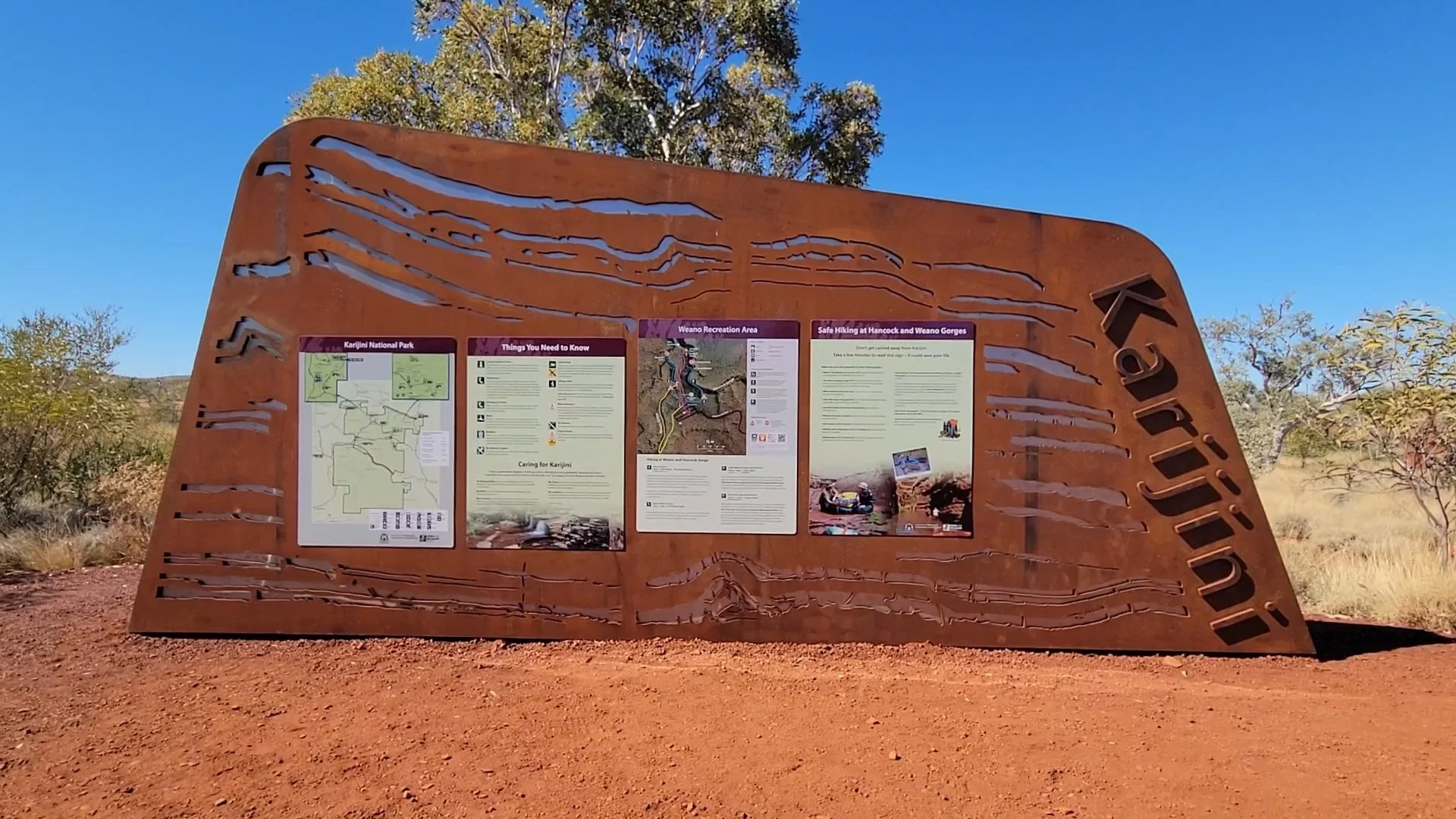
The Ultimate Guide to Karijini National Park
Western Australia
Karijini National Park is one of Western Australia's crown jewels, famed for its dramatic gorges, ancient rock formations, and unforgettable hiking experiences. In this ultimate guide, we break down the most iconic hikes, share practical planning tips, and help you prepare for an epic adventure.
Where is Karijini National Park?
Located in the remote Pilbara region of Western Australia, Karijini sits between Broome and Exmouth. Spanning over 628,000 hectares, it is the second-largest national park in WA. The area is known for its rugged outback beauty, red earth landscapes, and crystal-clear pools deep within narrow gorges.
How Long Should You Stay?
While it's possible to see the highlights in two days, we recommend at least three days to fully appreciate the hikes and enjoy some downtime between adventures. This guide includes suggested itineraries at the end.
Detailed Breakdown of the Hikes
1. Dales Gorge
Grade: 3 / 4
Loop Trail: 4.2 km
Elevation Gain: 121 meters
Average Time: 4 hours
Our Time: 2 hours 45 minutes
Swimming: Optional
There are two different car parks for this trail, and we suggest parking at the Fortescue Falls car park. To be able to do the loop, you will be following the green and the yellow trail. We suggest doing the green trail towards the right, away from the Fern pool, first, as the descent is a bit rocky and easier going down than up. Doing this does mean you will be climbing a large staircase at the end of your hike, but it beats rock climbing up at the end. Also, right before you go up the staircase, you can take a nice plunge in one of the two pools to cool off and get ready for your ascent back up to the car park. As you start, be sure to watch your step as you come across rocks that look like tiles on the ground. The walk is quite nice for most of this hike. The terrain can get a bit uneven, but it is not too bad. As I mentioned, the descent goes down pretty quickly, but once you are in the gorge, it goes back to that semi-smooth terrain. There are plenty of cool boulders and shale rocks everywhere to admire on your walk. There can be some small water crossings depending on the time of year and rainfall, but at most, you should be able to hop from rock to rock or maybe just get the bottom of your shoes wet. At the end of the yellow trail, you will first run into Fortescue Falls, followed by the Fern Pool. Both are great swimming locations. The water can be cold plunge temperatures depending on the time of year, but if it is in the hot months, it could also be packed with people trying to cool off. Fortescue Falls are beautiful, and the Fern Pool offers a smaller falls and a larger swimming area. If you did not want to do the loop and just come down the staircase to the pools, that is totally an option. We suggest bringing a pool noodle to float and relax for a while. After you have had your swim, you will start the climb up the stairs and back to the car park. They do have toilets, but (as I am probably going to mention several times) bring enough water with a lot of extra waiting for you in your car.
2. Knox Gorge
Grade: 5
Return Trail: 2km
Elevation Gain: 90 meters
Average Time: 3 hours
Our Time: 1 hour 30 minutes
Swimming: Possibly?
When we were originally looking up information about the gorges, we came across a video that stated the road to Knox Gorge was gravel. The good news when we went in 2025, they had paved the road up to the car park. The car park was still compact dirt, but I believe they were in the process of updating it as well! There were no toilets or facilities in this parking area, so make note of that to go before you get here. The lookout for Knox Gorge is only 150 meters from the car park, is a grade 2 walk, and only takes minutes to get to. It gives you a great view of the gorge before heading down the trail. This is a grade 5 hike. It includes very steep descents and loose rocks. We had to use our hands in a few sections to help ourselves down a rock or climb back up. Once you get to the bottom of the gorge, you will be surrounded by its beauty. The natural rocks and waterways are beautiful. Eventually, you will run into some water. When we went, we were easily able to climb up on a rock and sneak around it to do the remaining part of the trail. Or if you wanted to go for a swim, the water is beautiful. Highly recommend trying to get to the STOP sign of the trail, as that is a beautiful picture spot, as the gorge is extremely tall and rather skinny there. (Pro tip: if you go midday, the sun lights up the gorge in a magical way.) Since it is not a loop trail, you will have to turn around and do everything in reverse. Be sure to take plenty of breaks and bring water.
3. Joffre Falls
Grade: 4 / 5
Return Trail: 1.3km
Elevation Gain: 36 meters
Average Time: 2 hours
Our Time: 1 hour 30 minutes
Swimming: Probably?
We recommend walking to the lookout first, as it is only a 200-meter return and takes no time at all. When you are ready to start the hike, you will be walking around the top of the waterfall first before descending into the gorge to get up close and personal with the bottom of the waterfall. Unfortunately, when we went, the waterfall had no water flowing down it. However, the rock formations and amphitheater it created were still amazing to look at. To descend into the gorge, there is a series of "stairs" (or as I call them, ladders) which make changing elevation quite quick! Once you get down the last staircase, you'll be turning right. This is where it gets interesting. When we went, as I mentioned, there was no water coming down the "waterfall". There was a lot of water still in the gorge, though. So, to get over to the waterfall, our non-swimming option was climbing up the shale rocks a little bit and carefully sliding across. No problem for us, but speaking from a witness's experience. Make sure you don't drop any valuables in the water. It is a cold swim to get them back. After you make it through that section, though, you will come across the big amphitheater, which houses Joffre Falls. After you are all finished up taking in the beauty, it is back the same way you came.
4. Weano Gorge
Grade: 2 / 4 / 5
Loop Trail: Variable km
Elevation Gain: 20 meters
Average Time: 2.5 hours
Our Time: 1 hour 30
Swimming: Optional
Weano Gorge to Handrail Pool is the main attraction here. By following the grade 2 trail down and coming back up the grade 4 trail, we found it quite easy. As you get closer and closer to the pool, it starts to look more and more like a fairy garden or something out of a storybook. The "handrail" in Handrail pool is why this portion of the hike is classified as a grade 5. You can get to the top handrail (it is a tight squeeze just before) and see the entire pool. Or if you want to get down right next to the pool, you use the handrail and foot holes and go down about 3 meters. The pool can be a swimming area, but if the water is stagnant, then it is suggested not to swim in the pool. Check with the signs and parks site before going if you would like to swim. After you are done basking in all the beauty, you will be going back the same way for a little bit, until you reach the crossroads. The rest of the grade 4 trail is a nice bush/rock hike. If you are crunched on time, then the loop is something you could leave out and go back up the same way you came down.
5. Hancock Gorge
Grade: 5
Return Trail: 1.1km
Elevation Gain: 37 meters
Average Time: 2 hours
Our Time: 1 hour 30 minutes
Swimming: Oh Yeah!...
Our absolute favorite.
Hands down, the best hike in Karijini National Park. At the beginning of this hike, we heard that we might have to go through some water. We were not sure if we wanted to do that, and at this point were pretty tired. Luckily, though, we got stuck behind a tour group, and after hearing the tour guide talking about what was coming up. We just could not resist. So Hancock Gorge is a return hike that leads to Kermit's Pool. It is a grade 5 and for good reason. In this hike, we had to wade, wall climb, swim, and spider crawl. I am making it sound so much scarier than it is, but trust me, it is worth it. You start with steep rocks and staircases down. Now, before I continue, I am going to note that the water levels in this gorge can change, and so can how deep the wading areas get. But up next, we rolled up our pants and waded in some knee-high water that was a bone-chilling cold plunge for our feet. After that, it's boots back on and keep trudging over the rocks. Next up, another water crossing section, where you have two options. Full swim (hopefully you packed a waterproof bag), or traverse the right side of the rock walls. We chose the rock walls, and it was quite fun. For two people who have never really done anything like this, we fared okay. The tour group in front of us had people from all walks of life, and everyone did amazing. This leads you to a great amphitheater for a short break. After that, the next obstacle is a spider climbing down a trickling waterway way which once again proved to us just how cool we are. At the very end of the trail, you come to Kermit's Pool, which is a nice, big swimming area in this little cavern portion of the gorge. There is a chain at the end of it to signal that you have reached the end of the hike. But don't worry, that was only half the fun. Because now you get to do everything in reverse!
6. Hamserley Gorge
Grade: 4
Return Trail: .5k
Elevation Gain: 14 meters
Average Time: 1 hours
Our Time: 0 hours
Swimming: Optional
Hamserley Gorge is the one hike that we were unable to get to. Right before we got there, our car had some major mechanical issues, and we had to get towed back to Tom Price. With that being said. There is a 4WD track from the rest of the gorges to Hamserley. But if you don't want that crazy adventure, you do have to drive out of the national park, through Tom Price (the small mining town), and then back into the national park. The road leading up to the gorge is about 40 km of compact dirt. It was not corrugated, and we could drive pretty fast, but definitely plan for a little extra time, especially if it had recently rained. The gorge is a return trail that includes a lot of steps with no handrails to get down. It is supposed to be one of the most beautiful of all the gorges. It offers two different swimming areas as well, so definitely bring something to swim in! This is the "bonus" gorge because of its location. So if you are planning on doing this gorge, I would make sure you have your route planned out beforehand. There is a free camp just outside the national park, very close to the gorge, if you plan on swimming until late in the afternoon.
Camping
There are 2 main options when it comes to camping in Karijini National Park:
1. Karijini Eco Retreat - Offers camping and glamping options.
2. Dales Campground - Can be booked through the Department of Parks and Wildlife.
3. Bonus Option: Karijini Overflow Camping - Best advice I can give you…
Book. In. Advance. Especially during the busy season (school holidays). We ended up in the Karijini Overflow Camping. It is slightly farther out of the way than the other 2 camping options, but if you are self-sufficient it gets the job done! There is some non-potable water there, but not much else. Cell service can be iffy in that area, so if you need to do any planning on your phone, try to do it in one of the gorge car parks where you know you get service beforehand.
4. Buddha's Overnighter - If you are planning on doing Hamersley Gorge, this is the free camp I was talking about. Your basic dirt patch-free camp.
Sample 3-Day Itinerary
Day 1:
Dales Gorge (Fortescue Falls & Fern Pool)
Karijini Visitor Centre
Knox Gorge
Joffre Falls
Overnight at Karijini Eco Retreat
Day 2:
Weano Gorge & Handrail Pool
Hancock Gorge
Optional: Second night at Eco Retreat
Day 3:
Drive to Hamersley Gorge
Swim and relax
Camp at Buddha's Overnighter
Hamersley can be tacked onto day 2 if you are up for it! Or if you are a go at your own pace sort of person, we would suggest a second night at the eco retreat and doing Hamersley on day 3.
Best Time To Visit
Visit from May to September. This is the dry season with cooler temperatures, ideal for hiking. We went in June and it was perfect.
Water
Swimwear
Waterproof bag
Change of clothes
Hiking Boots with good grip
Snacks
What To Pack
First Aid Kit
Camera
Portable Charger
Hat
Sunscreen
More Water
Park Fees & Permits
Karijini National Park requires a day-use entry fee:
$15 per vehicle (up to 12 people)
$8 per motorcycle
Concession rates apply for seniors and other eligible cardholders
If you're visiting several national parks in Western Australia, consider purchasing a Holiday Park Pass:
5-Day Pass: $25
14-Day Pass: $40
1-Year All Parks Pass: $120
You can purchase these online through the WA Parks and Wildlife Service.Note: these prices are from July 2025
Safety Tips for Visiting Karijini
Karijini is breathtaking, but it’s also rugged and remote. Here's how to stay safe:
Check road conditions and park alerts before traveling, especially after rain. Some gorges may be closed due to flash flooding risks.
Wear appropriate footwear with good grip for rocky and often slippery surfaces.
Carry more water than you think you need. There are no refill stations inside most gorge areas.
Inform someone of your hiking plans, especially if going into less-trafficked areas.
Download or carry offline maps. There's limited to no mobile service.
Be cautious with cliff edges and rock jumps. Injuries often happen from misjudged jumps or loose rock.
Final Tips
Make sure you are well stocked with water and food for your entire visit.
Respect the local environment and leave no trace.
Be prepared to change your route depending on the weather and water levels.
Karijini National Park is a raw and unforgettable experience. With proper planning, a sense of adventure, and of course, the right gear, you'll be ready to explore some of the most dramatic landscapes Australia has to offer.

